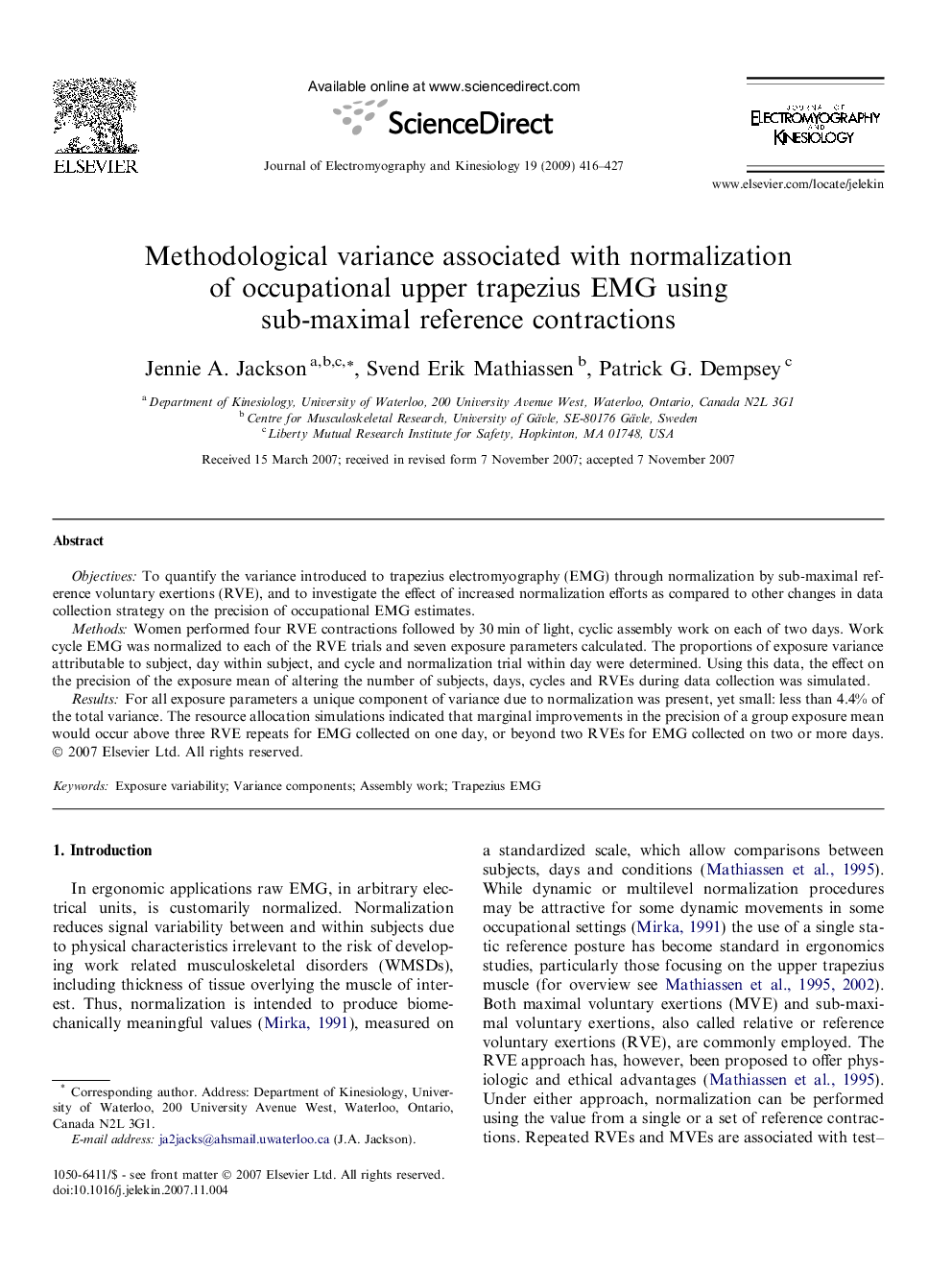| Article ID | Journal | Published Year | Pages | File Type |
|---|---|---|---|---|
| 4065339 | Journal of Electromyography and Kinesiology | 2009 | 12 Pages |
ObjectivesTo quantify the variance introduced to trapezius electromyography (EMG) through normalization by sub-maximal reference voluntary exertions (RVE), and to investigate the effect of increased normalization efforts as compared to other changes in data collection strategy on the precision of occupational EMG estimates.MethodsWomen performed four RVE contractions followed by 30 min of light, cyclic assembly work on each of two days. Work cycle EMG was normalized to each of the RVE trials and seven exposure parameters calculated. The proportions of exposure variance attributable to subject, day within subject, and cycle and normalization trial within day were determined. Using this data, the effect on the precision of the exposure mean of altering the number of subjects, days, cycles and RVEs during data collection was simulated.ResultsFor all exposure parameters a unique component of variance due to normalization was present, yet small: less than 4.4% of the total variance. The resource allocation simulations indicated that marginal improvements in the precision of a group exposure mean would occur above three RVE repeats for EMG collected on one day, or beyond two RVEs for EMG collected on two or more days.
